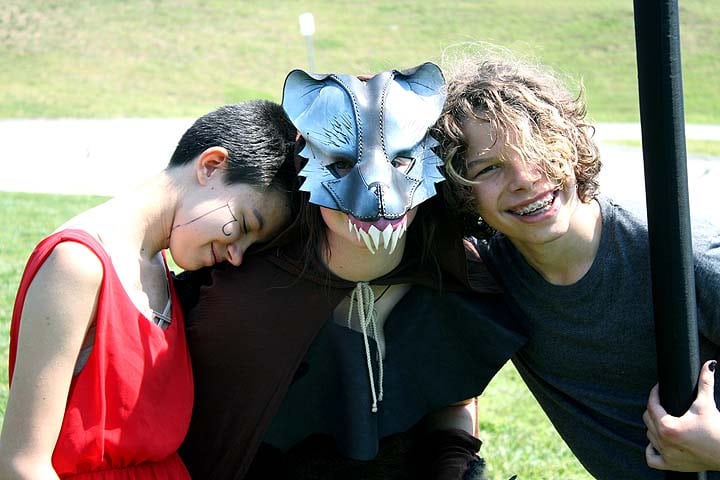
How to Run a LARP in 6 Steps
Live Action Role-Playing (LARP) is a unique and immersive form of role-playing game (RPG) that involves physically acting out characters’ actions and interactions in a live setting. Running a LARP event can be challenging – especially for those new to the world of RPGs. But it can also be a rewarding experience, and with proper planning, it can be a memorable and even impactful event for all involved.
Here are some suggested steps for running a LARP:
- Choose a Theme: First, decide on a theme or setting for the game. This can be based on a fictional world, historical event, or even a modern day scenario. The theme or setting will provide a foundation for the game and will help to guide the creation of characters, costumes, and props. You should also consider if the theme fits any educational outcomes you want your players to gain, such as STEM or social emotional learning (SEL).
- Choose a Game System: This is what tells your participants and staff how to play the game. Think of it as the “rule book” or “instructions” of any tabletop game. If you are not already using an established LARP game system, you will need to either create one or decide which one to use. If you are new to running a LARP, simple is best. Creating your own system can be a long endeavor because it requires playtesting and updating numerous times. Some free LARP systems are available. You might want to be certain that the game system you choose covers your preferred type of combat or conflict system whether that is using foam weapons or nonviolent communication.
- Create Characters: When running a shorter LARP, it is advisable to create established characters for the participants to play. For longer LARPs, you can provide character creation sheets with rules and the participants can design their own character. In either case, these characters should be well-rounded and have distinct personalities and abilities. They should also be appropriate for the theme or setting of the game. Providing a character sheet with the character’s background and abilities can be helpful for the players to better understand and connect with their character.
- Props & Costumes: If you are running a short term LARP, participants (called “players”) should be provided with costumes and props to help them fully embody and represent their characters. For longer term LARPs, players can create their own according to the requirements. These can be as simple or as elaborate as desired, but they should be appropriate for the theme or setting of the game. Foam weapons and shields or NERF Blasters can also be provided for safe combat scenarios if this is part of your LARP theme.
- Create the Game Scenario: This is often referred to as the “module”, “adventure”, or “quest” for the players to participate in. This scenario should be based on the theme or setting of the game and should provide a clear goal for the players to work towards. The scenario should also include challenges and obstacles that will require the players to work together and use their characters’ abilities. The module might also include STEM or SEL aspects if you want to make the LARP educational.
- Communicate Safety Rules: It’s also important to have a clear safety protocol in place and to train staff and players on these rules before the start of the LARP event. This includes the use of foam weapons or other interactive combat, as well as guidelines for physical contact. It’s also important to look at your LARP through the eyes of accessibility and make adjustments for people with disabilities.
On the day of the event, it’s important to have a clear plan and schedule for the game scenario, and to have a designated person in charge of keeping the game moving and managing any issues that arise. It’s also important to have a designated person in charge of safety during the event. Please keep in mind that there is a saying in LARP that “no story survives first contact with the players”. What this means is that you should be prepared to flex and change your story or even your desired outcome depending on what the players do. Having some skill in improv acting is very helpful in this area.
After the event, it’s a good idea to have a debriefing session with the players to gather feedback and suggestions for improvement. This can be done through group discussions or written evaluations.
It may sound like a lot of preparation and logistics… but running LARPs and experiencing the level of player immersion and impact can be a powerful reward. As you create and run more, you will become more skilled at it and the preparation gets much less cumbersome. You will likely also look back on your start of running a LARP with gratitude because you will soon realize that there is nothing quite as exciting as acting out an adventure.
Guardian Adventures provide consulting and licensing of educational adventures, including a free LARP and cultural programs, for summer camps, amusement & attraction industries, and more.
